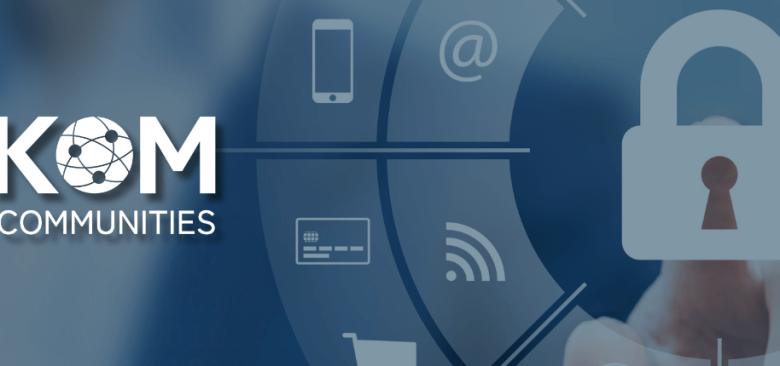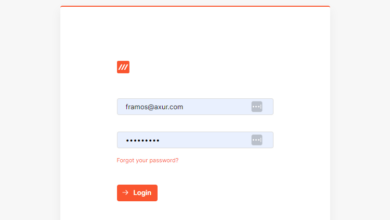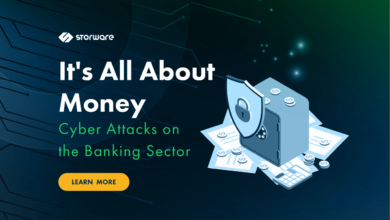
Cyber Threats Are Spiking As Remote Worker Ranks Soar
Cyber threats are spiking as remote worker ranks soar – it’s a headline that’s becoming increasingly unavoidable. The shift to remote work, while offering flexibility and convenience, has inadvertently opened a Pandora’s Box of security vulnerabilities. From unsecured home networks to sophisticated phishing scams, the risks facing remote employees are significantly higher than those in traditional office environments.
This isn’t just a tech problem; it’s a human problem, requiring a multi-pronged approach involving stronger security measures, robust training, and a shift in mindset regarding online safety.
This post delves into the alarming rise in cyberattacks targeting remote workers, exploring the specific threats, vulnerabilities, and mitigation strategies needed to navigate this increasingly risky landscape. We’ll examine everything from the common pitfalls of working from home to the cutting-edge technologies designed to bolster security. Get ready to tighten up your digital defenses!
The Rise of Remote Work and its Security Implications
The dramatic shift towards remote work, accelerated by the global pandemic, has undeniably boosted productivity and flexibility for many businesses. However, this paradigm shift has also significantly expanded the attack surface for cybercriminals, leading to a corresponding surge in cyber threats. The increased reliance on remote access, coupled with often less secure home networks and devices, creates a perfect storm of vulnerabilities that traditional office environments largely avoid.The correlation between the increase in remote workers and the surge in cyber threats is undeniable.
As more employees work outside the physical security of a corporate office, the potential for breaches increases exponentially. This isn’t simply about a larger number of potential targets; it’s about a fundamentally different security landscape. The robust network security and physical safeguards present in a traditional office are largely absent in the average home office, creating significant weaknesses that malicious actors can exploit.
Vulnerabilities Introduced by a Remote Workforce
Remote work environments introduce several specific vulnerabilities. These include, but are not limited to, unsecured home Wi-Fi networks, the use of personal devices for work purposes (BYOD – Bring Your Own Device), a lack of consistent security patching and updates on personal devices, and increased reliance on cloud services with varying security protocols. The geographically dispersed nature of a remote workforce also makes it more challenging to implement and enforce consistent security policies and practices.
Furthermore, the blurring of lines between personal and professional life in a remote setting can lead to careless security habits, such as using weak passwords or clicking on phishing links.
Examples of Security Risk Differences Between Remote and Traditional Office Settings
A traditional office environment benefits from centralized security measures such as firewalls, intrusion detection systems, and physical access controls. These layers of protection significantly reduce the risk of unauthorized access and data breaches. In contrast, remote workers often rely on their home internet connection, which may lack robust security features. The use of personal devices introduces further risk, as these devices may not have the same level of security software and updates as corporate-owned equipment.
Furthermore, the lack of direct supervision makes it harder to monitor employee activity and ensure compliance with security policies. Data loss through lost or stolen laptops is also a significant concern in remote work environments, a risk significantly minimized in a traditional office setting.
Hypothetical Cyberattack Targeting a Remote Workforce, Cyber threats are spiking as remote worker ranks soar
Imagine a company with a largely remote workforce. A sophisticated phishing campaign is launched, targeting employees with personalized emails appearing to be from a trusted source, such as their bank or a well-known online retailer. The emails contain malicious attachments or links leading to a website designed to steal login credentials. Several employees, unaware of the phishing attempt, click the links and unknowingly compromise their work accounts.
The attackers then use these credentials to access company systems and sensitive data, potentially including customer information, financial records, and intellectual property. The decentralized nature of the remote workforce makes it difficult to contain the breach quickly, resulting in significant financial and reputational damage for the company. This scenario highlights the increased vulnerability of remote work environments to sophisticated attacks and the need for robust security protocols and employee training.
Types of Cyber Threats Targeting Remote Workers

The dramatic shift towards remote work, while offering flexibility and convenience, has unfortunately opened up a Pandora’s Box of cybersecurity vulnerabilities. Remote workers, often operating outside the protective perimeter of a corporate network, become significantly more susceptible to a range of cyber threats. Understanding these threats and implementing effective mitigation strategies is crucial for both individual workers and organizations.
Cybercriminals are constantly adapting their tactics to exploit the weaknesses inherent in remote work setups. They leverage the increased reliance on personal devices, unsecured networks, and less robust security protocols to launch attacks. The consequences can range from data breaches and financial losses to reputational damage and operational disruptions.
Phishing Attacks
Phishing remains one of the most prevalent and effective cyber threats targeting remote workers. These attacks typically involve deceptive emails, text messages, or websites designed to trick individuals into revealing sensitive information, such as usernames, passwords, credit card details, or social security numbers. Sophisticated phishing campaigns often mimic legitimate organizations or individuals, making them difficult to detect. For example, a phishing email might appear to be from a worker’s bank, urging them to update their account information by clicking a malicious link.
This link could then download malware onto their device or redirect them to a fake login page designed to steal credentials.
Malware Infections
Malware, encompassing viruses, worms, Trojans, spyware, and ransomware, poses a significant threat to remote workers. These malicious programs can be downloaded unknowingly through infected email attachments, compromised websites, or malicious advertisements. Once installed, malware can steal data, disrupt system operations, encrypt files (ransomware), or even take control of the infected device. A particularly insidious form of malware is ransomware, which encrypts a victim’s files and demands a ransom for their release.
The NotPetya ransomware attack in 2017, which crippled many global organizations, serves as a stark reminder of the devastating consequences of such attacks.
Man-in-the-Middle Attacks
In a man-in-the-middle (MitM) attack, a cybercriminal intercepts communication between two parties, often without either party’s knowledge. This can occur on unsecured Wi-Fi networks, allowing attackers to eavesdrop on sensitive data, such as login credentials or financial transactions. Remote workers frequently use public Wi-Fi hotspots, making them particularly vulnerable to this type of attack. For instance, an attacker could intercept a remote worker’s banking login information while they’re accessing their account on a public Wi-Fi network.
Weak or Stolen Credentials
Using weak or easily guessable passwords, reusing passwords across multiple accounts, and falling prey to credential stuffing attacks leave remote workers highly vulnerable. Credential stuffing involves using stolen usernames and passwords obtained from data breaches on other websites to try to access accounts on different platforms. This is often successful because many users reuse the same password across multiple accounts.
The impact can range from simple account takeover to significant data breaches depending on the accounts compromised.
| Threat Type | Description | Target | Mitigation Strategy |
|---|---|---|---|
| Phishing | Deceptive attempts to acquire sensitive information by disguising as a trustworthy entity. | User credentials, financial information, personal data. | Security awareness training, email filtering, multi-factor authentication. |
| Malware | Malicious software designed to damage, disrupt, or gain unauthorized access to a computer system. | Data, system integrity, financial information. | Antivirus software, regular software updates, secure browsing habits. |
| Man-in-the-Middle Attack | Interception of communication between two parties to steal data or manipulate transactions. | Data transmitted over unsecured networks. | Using VPNs on public Wi-Fi, secure network configurations. |
| Weak/Stolen Credentials | Compromised or easily guessable passwords enabling unauthorized access. | User accounts, sensitive data. | Strong password policies, password managers, multi-factor authentication. |
Vulnerabilities in Remote Work Infrastructure
The shift to remote work has dramatically expanded the attack surface for cybercriminals. No longer confined to the relatively secure perimeter of a corporate network, sensitive data and critical systems are now accessible from a multitude of home networks and personal devices, each presenting unique vulnerabilities. Understanding these weaknesses and implementing robust security measures is paramount to mitigating the risks associated with a distributed workforce.Home networks, often configured with default passwords and lacking robust firewalls or intrusion detection systems, represent a significant entry point for attackers.
Similarly, personal devices, such as laptops, smartphones, and tablets, may not receive the same level of security updates and patching as corporate-managed devices, leaving them susceptible to malware and exploits. This combination of less secure infrastructure and potentially outdated software creates a fertile ground for cyber threats.
Home Network Security Weaknesses
Weak or default passwords on routers and other network devices are common vulnerabilities. Many home users fail to change these default credentials, providing attackers with an easy entry point into the network. Furthermore, a lack of robust firewalls and intrusion detection systems leaves the network exposed to various attacks, including denial-of-service attacks and unauthorized access attempts. The absence of regular software updates on routers and other network devices further compounds these risks, leaving them vulnerable to known exploits.
Finally, the use of unsecured Wi-Fi networks, such as those found in public places, exposes sensitive data to interception and unauthorized access.
Securing Home Networks and Personal Devices
Securing home networks and personal devices requires a multi-layered approach. This includes changing default passwords on all network devices to strong, unique passwords; enabling strong firewalls and intrusion detection systems; regularly updating the firmware on routers and other network devices; using strong and unique passwords for all personal accounts; enabling multi-factor authentication (MFA) whenever possible; installing and regularly updating antivirus and anti-malware software; and avoiding the use of unsecured public Wi-Fi networks.
Regular security audits and penetration testing can also help identify and address potential vulnerabilities before they are exploited.
Organizational Security Measures for Remote Workers
Organizations have a crucial role to play in protecting their remote workforce. This involves providing remote workers with secure access to company resources through virtual private networks (VPNs), which encrypt data transmitted between the employee’s device and the company network. Implementing robust access controls, including multi-factor authentication, ensures that only authorized personnel can access sensitive data. Regular security awareness training for remote workers is also essential, educating them about phishing scams, malware, and other common threats.
Organizations should also provide and mandate the use of endpoint detection and response (EDR) solutions on all devices used for work purposes, allowing for proactive threat detection and response. Finally, the organization should enforce a strong password policy and require regular password changes.
Impact of Inadequate Security Measures
Inadequate security measures can lead to devastating consequences. Data breaches, resulting in the exposure of sensitive customer information, intellectual property, or financial data, can inflict significant financial and reputational damage on an organization. Malware infections can cripple operations, leading to lost productivity and potential business disruptions. Ransomware attacks can encrypt critical data, demanding a ransom for its release.
In severe cases, inadequate security can lead to regulatory fines and legal repercussions. For example, the 2017 Equifax data breach, which exposed the personal information of millions of customers, resulted in significant financial losses and legal penalties for the company. This breach highlighted the severe consequences of inadequate security measures, particularly in the context of remote work.
The Role of Cybersecurity Awareness Training
With the rise of remote work, the traditional office perimeter has dissolved, making cybersecurity awareness training more crucial than ever. Effective training empowers employees to become the first line of defense against increasingly sophisticated cyber threats, significantly reducing the risk of successful attacks. Investing in comprehensive training is not just a cost; it’s a strategic investment in protecting sensitive data and maintaining business continuity.Cybersecurity awareness training isn’t a one-time event; it’s an ongoing process.
Regular refresher courses, interactive modules, and simulated phishing attacks keep employees vigilant and up-to-date on the latest threats. The effectiveness of training is directly proportional to its engagement and relevance to employees’ daily tasks. A well-designed program considers various learning styles and utilizes diverse methods to maximize retention and application of learned skills.
Effective Cybersecurity Awareness Training Programs for Remote Workers
Several effective training models exist for remote workers. These include interactive online modules, gamified learning platforms, short video tutorials, and even simulated phishing exercises. For example, a program might incorporate a series of short, engaging videos demonstrating common phishing tactics, followed by a quiz to test comprehension. Another effective approach is a gamified platform where employees earn points and badges for completing training modules and correctly identifying threats, fostering a sense of competition and achievement.
Finally, simulated phishing attacks, where employees receive carefully crafted phishing emails, allow for real-world testing and immediate feedback on their ability to recognize and report suspicious activity. This hands-on experience solidifies learned concepts and highlights the real-world consequences of cybersecurity lapses.
The Importance of Regular Security Updates and Patching
Regular updates and patching are essential for maintaining a secure remote work environment. Software and hardware vulnerabilities are constantly being discovered, and attackers are quick to exploit them. Outdated software and unpatched systems act as open doors for malware and other threats. A robust patching schedule, coupled with automated update systems, minimizes the window of vulnerability. For instance, a company might implement a policy requiring all employees to install critical security updates within 24 hours of their release.
Furthermore, regular security scans and vulnerability assessments can identify and address weaknesses before they can be exploited. This proactive approach significantly reduces the risk of successful attacks and minimizes potential damage.
A Sample Cybersecurity Awareness Training Module: Phishing Prevention
This module focuses on phishing prevention techniques. It begins with a brief introduction to phishing, explaining what it is and how it works. The module then presents various examples of phishing emails, highlighting common red flags such as suspicious sender addresses, grammatical errors, urgent requests, and unusual links. A key component is a practical exercise where participants analyze sample emails and identify potential phishing attempts.
Finally, the module emphasizes the importance of reporting suspicious emails and adhering to company security policies. The module concludes with a short quiz to assess understanding and retention of the key concepts. A successful completion certificate is issued upon successful completion of the quiz.
Tips for Creating Engaging and Effective Cybersecurity Training Materials
Creating engaging cybersecurity training requires careful consideration of various factors. First, keep it concise and relevant. Avoid overwhelming employees with technical jargon; use clear, simple language. Second, use a variety of media, including videos, infographics, and interactive exercises, to cater to different learning styles. Third, make it interactive and engaging; incorporate quizzes, games, and scenarios to maintain interest.
With more people working remotely, cyber threats are definitely on the rise. It’s crucial to bolster security, and that includes streamlining app development. For robust, secure solutions, explore the innovative approaches outlined in this article on domino app dev the low code and pro code future , which can help businesses build better defenses against increasingly sophisticated attacks.
Ultimately, stronger security is key to managing the risks associated with a growing remote workforce.
Fourth, personalize the training to reflect the specific risks faced by remote workers. Finally, provide regular reinforcement and refresher courses to ensure ongoing awareness and vigilance. By incorporating these elements, organizations can create effective cybersecurity training programs that empower employees to protect themselves and their company’s data.
Emerging Technologies and their Impact on Remote Work Security: Cyber Threats Are Spiking As Remote Worker Ranks Soar

The rise of remote work has dramatically shifted the cybersecurity landscape, demanding innovative solutions to protect increasingly dispersed workforces. Emerging technologies are playing a crucial role in bolstering remote work security, offering enhanced protection against sophisticated cyber threats. This section explores some key technologies and their impact.
Multi-Factor Authentication (MFA) in Enhancing Remote Worker Security
Multi-factor authentication (MFA) significantly strengthens remote worker security by requiring users to provide multiple forms of verification before accessing systems or data. Instead of relying solely on a password, MFA adds extra layers of security, such as one-time codes sent to a mobile device, biometric scans (fingerprint or facial recognition), or security keys. This layered approach makes it exponentially harder for attackers to gain unauthorized access, even if they manage to steal a password.
For example, even if a malicious actor obtains an employee’s password through phishing, they would still need access to their phone or biometric data to complete the authentication process. This drastically reduces the success rate of common attack vectors.
Cloud-Based Security Solutions for Protecting Remote Workers
Cloud-based security solutions provide centralized management and protection for remote workers’ devices and data. These solutions offer a range of capabilities, including endpoint protection, data loss prevention (DLP), and secure access service edge (SASE) capabilities. Cloud-based security platforms often leverage artificial intelligence (AI) and machine learning (ML) to detect and respond to threats in real-time. This proactive approach allows for immediate remediation of security breaches, minimizing the potential impact on the organization.
With more people working remotely, cyber threats are spiking – it’s a scary reality. To combat this, robust cloud security is crucial, and that’s where solutions like bitglass and the rise of cloud security posture management become incredibly important. Understanding and managing your cloud security posture is key to mitigating the risks associated with this increase in remote work and the resulting surge in cyberattacks.
For instance, a cloud-based security solution might detect malware on a remote employee’s laptop and automatically quarantine the infected device, preventing further spread of the threat across the network.
Benefits and Drawbacks of Using VPNs for Secure Remote Access
Virtual Private Networks (VPNs) create secure, encrypted connections between a remote device and a company’s network. This allows remote workers to access internal resources and data as if they were physically present in the office, without exposing sensitive information to potential eavesdroppers on public Wi-Fi networks. Benefits include enhanced data privacy, protection against man-in-the-middle attacks, and compliance with data protection regulations.
However, VPNs can also introduce performance issues due to encryption overhead and introduce complexities in network management. Furthermore, relying solely on VPNs without other security measures can leave organizations vulnerable to other threats. For example, a VPN might protect the connection but not necessarily the device itself from malware.
Zero-Trust Security Model for Improving Remote Work Security
A zero-trust security model operates on the principle of “never trust, always verify.” Unlike traditional perimeter-based security, which assumes that everything inside the network is trustworthy, zero trust assumes nothing is inherently secure. Every user, device, and application, regardless of location, must be authenticated and authorized before accessing any resource. Imagine a scenario where a remote employee wants to access a sensitive document.
Under a zero-trust model, the system wouldn’t grant access simply because the employee is connected to the VPN. Instead, it would verify the employee’s identity through MFA, check the device’s security posture (e.g., up-to-date antivirus software, operating system patches), and ensure the employee has the necessary permissions to access the specific document before granting access. This granular control minimizes the impact of compromised credentials or devices, as access is always carefully controlled and limited to only what is absolutely necessary.
The Economic and Reputational Costs of Cyberattacks on Remote Workforces

The shift to remote work has brought undeniable benefits, but it’s also dramatically expanded the attack surface for cybercriminals. The financial and reputational consequences of successful attacks against remote workforces can be devastating, impacting not only the bottom line but also long-term brand trust and customer relationships. Understanding these costs is crucial for proactive security planning.
Financial Losses from Cyberattacks Targeting Remote Workers
The financial repercussions of cyberattacks on remote workers are multifaceted and often underestimated. Direct costs include the immediate expenses related to incident response, such as hiring cybersecurity experts, legal counsel, and public relations firms. Indirect costs are often far greater and include lost productivity, business disruption, recovery efforts, and potential fines for non-compliance with data protection regulations. These losses can cripple even the most financially stable organizations.
- Data breaches leading to financial theft: Stolen financial data can result in direct monetary losses from fraudulent transactions, account compromises, and identity theft, impacting both the company and its employees. The cost of recovering from such breaches can run into millions of dollars, depending on the scale and sensitivity of the stolen information.
- Ransomware attacks disrupting operations: Ransomware attacks can completely halt business operations, leading to lost revenue, missed deadlines, and damage to client relationships. The cost of paying the ransom (which is not recommended by security experts) and the recovery process can be exceptionally high.
- Legal and regulatory fines: Non-compliance with data protection regulations like GDPR or CCPA can result in significant financial penalties, especially if a data breach involves sensitive personal information of customers or employees. These fines can reach into the tens or even hundreds of millions of dollars, depending on the severity of the breach and the applicable regulations.
Reputational Damage from Data Breaches Involving Remote Workers
Beyond the direct financial costs, cyberattacks targeting remote workforces can inflict significant reputational damage. Loss of customer trust, damage to brand image, and negative media coverage can have long-term consequences, affecting future business prospects and investor confidence. The impact on employee morale and recruitment efforts can also be substantial.
- Loss of customer trust: A data breach revealing sensitive customer information can severely erode trust, leading to customer churn and a decline in sales. Rebuilding this trust can take years, requiring significant investment in rebuilding confidence and transparency.
- Negative media coverage: Public disclosure of a security breach can result in negative media attention, damaging the company’s reputation and impacting its public image. This negative publicity can make it difficult to attract new customers and partners.
- Impact on employee morale and recruitment: Employees may lose confidence in the company’s security practices following a data breach, impacting morale and productivity. Moreover, a tarnished reputation can make it difficult to attract and retain top talent.
Real-World Examples of Costly Cyberattacks on Remote Workforces
Numerous real-world incidents highlight the substantial costs associated with cyberattacks on remote workforces. These examples underscore the need for robust security measures and comprehensive cybersecurity awareness training.
- The Colonial Pipeline ransomware attack (2021): This attack resulted in a significant disruption of fuel supply across the East Coast of the United States, causing widespread panic and economic losses. The company paid a multi-million dollar ransom, and the long-term costs of recovery and reputational damage were far greater.
- The SolarWinds supply chain attack (2020): This massive breach compromised thousands of organizations worldwide, highlighting the vulnerability of supply chains and the potential for widespread damage from a single compromised vendor. The financial and reputational costs for affected organizations were substantial and far-reaching.
- Various phishing and social engineering attacks: Numerous smaller-scale attacks involving phishing emails or social engineering tactics targeting remote workers lead to significant data breaches and financial losses for businesses of all sizes. The cumulative cost of these attacks is substantial, demonstrating the pervasive nature of these threats.
Ending Remarks
The explosion of remote work has undeniably amplified the threat landscape for businesses and individuals alike. While the convenience and flexibility are undeniable, ignoring the security implications is simply not an option. By understanding the vulnerabilities, implementing robust security measures, and investing in comprehensive cybersecurity awareness training, we can significantly reduce our risk and build a more secure future for the remote workforce.
Remember, vigilance and proactive security are our best defenses against the ever-evolving world of cyber threats.
FAQ Overview
What are the most common types of phishing attacks targeting remote workers?
Spear phishing (highly targeted emails), whaling (targeting high-level executives), and email spoofing (making emails appear to be from legitimate sources) are prevalent.
How can I secure my home network for remote work?
Use a strong, unique password for your router, enable firewall protection, regularly update your router’s firmware, and consider using a VPN.
What is multi-factor authentication (MFA), and why is it important?
MFA adds an extra layer of security by requiring multiple forms of authentication (password, code from your phone, etc.) before granting access, making it much harder for hackers to gain unauthorized access.
What should I do if I suspect I’ve been a victim of a cyberattack?
Immediately disconnect from the internet, change your passwords, report the incident to your IT department or the relevant authorities, and run a malware scan.





